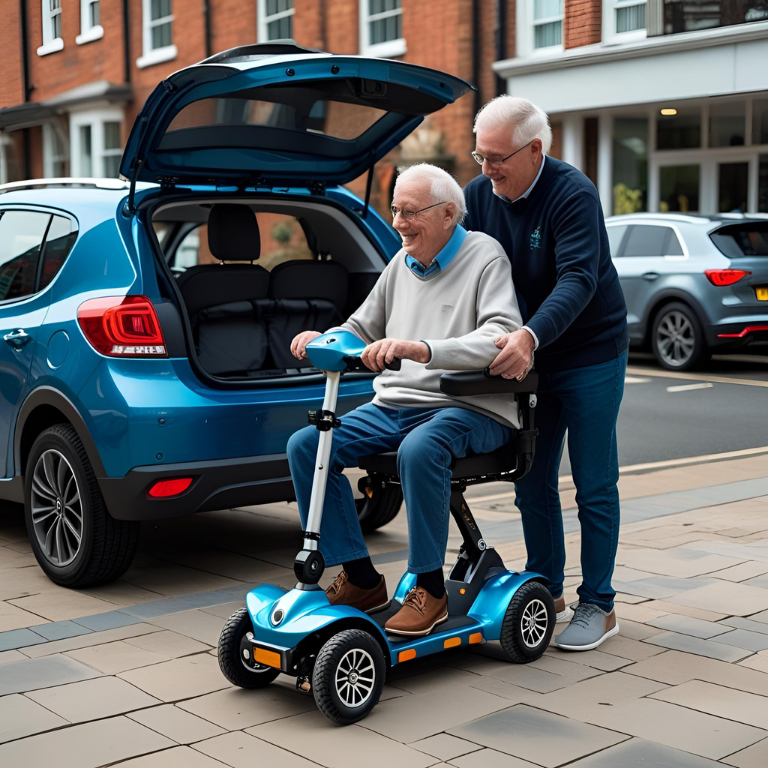- Home
- Mobility Scooter Cost
How Much Are Mobility Scooters? A Complete Price Guide for Australian Buyers.
How much are mobility scooters in Australia? Mobility scooters are far more than just personal vehicles — they’re empowering tools for independence, confidence, and everyday convenience. Whether you're purchasing one for yourself or helping a loved one regain mobility, understanding how much are mobility scooters is critical to making a smart, value-driven decision.
From compact travel scooters to high-end enclosed cabin models, prices vary widely based on size, features, and functionality.
This guide breaks down everything you need to know — from current price ranges and hidden fees to funding options and must-have features — helping you confidently navigate the market and choose the right scooter for your needs.

Average Cost of Mobility Scooters in Australia
Prices can vary dramatically. The type, size, and features will determine how much are mobility scooters will cost. Here's a general breakdown:
|
Mobility Scooter Type |
Estimated Price Range (AUD) |
Best For |
|
Portable /Travel Scooters |
$1,000 – $3,000 |
Short trips, easy transport |
|
Mid-size Scooters |
$2,500 – $5,000 |
Daily use, indoor/outdoor versatility |
|
Heavy-duty Scooters |
$4,000 – $8,000 |
Rugged terrain, higher weight limits |
|
Enclosed Cabin Scooters |
$6,000 – $12,000+ |
Full weather protection, advanced comfort |
Keep in mind: higher cost often reflects better suspension, longer battery life, advanced electronics, and more ergonomic design.
Factors That Influence How Much Are Mobility Scooters Will Cost
When it comes to determining how much mobility scooters cost, several factors come into play beyond just size and model type.
One of the most impactful considerations is the battery — specifically, its type and range. Lithium-ion batteries tend to cost more but offer a longer lifespan, faster charging, and superior travel distance compared to traditional sealed lead-acid options. This added convenience and performance can significantly increase the scooter’s overall price.
Ride comfort and suspension also influence the cost. Scooters built with premium suspension systems are designed to absorb shocks and handle uneven terrain with ease, making them ideal for users who rely on them for outdoor travel. These enhancements naturally come at a higher price point, especially when combined with ergonomic seating and advanced shock absorption.
Weight capacity is another critical pricing factor. Heavy-duty scooters built to support larger weight limits require reinforced frames, stronger motors, and upgraded components, all of which elevate the cost. These models prioritise safety, stability, and durability, making them worth the investment for users with greater mobility support needs.
Technological features also play a significant role. Scooters equipped with LCD control panels, GPS navigation, USB charging ports, and theft-deterrent security systems tend to fall into the mid-to-high price brackets. While these add-ons enhance user convenience, connectivity, and peace of mind, they also contribute to the scooter’s premium pricing.
Lastly, the brand itself and the warranty it offers can sway the value proposition. Established manufacturers often command higher prices due to their reputation for reliability, access to servicing, and stronger customer support. A robust warranty — especially one that covers both parts and labour — adds long-term value and protection, further justifying a higher initial spend.
Hidden Costs to Consider
Purchasing a mobility scooter isn't just a one-time transaction. Consider the following:
- Accessories: Baskets, canopies, cup holders, oxygen tank holders, and walking stick clips can add $50–$500.
- Servicing & Repairs: Annual maintenance might cost $150–$300. Extended warranties or service plans may be extra.
- Insurance: Optional but recommended. Coverage typically starts around $100/year.
- Registration & Compliance: Some states have registration requirements for road use.
- Transportation Equipment: Scooters may require vehicle hoists or ramps for easy transport, costing up to $2,000.

Who Buys Mobility Scooters?
Most buyers are seniors looking to regain independence — but they're also used by:
- Individuals with physical disabilities
- People recovering from injuries or surgeries
- Carers seeking safer transport alternatives
That’s why cost isn’t just about dollars — it’s about value, freedom, and peace of mind.
Price vs. Purpose: Choosing the Right Scooter
When it comes to choosing a mobility scooter, the most important consideration isn’t necessarily the price tag—it’s how well the scooter fits your lifestyle. Instead of zeroing in on the cheapest option, think about where, when, and how you’ll use it.
For those tackling short commutes around town or navigating busy urban environments, compact and portable mobility scooters often provide the perfect balance of convenience and affordability. These lightweight models typically cost under $2,000 and are easy to fold or disassemble for storage and transport. Their agility makes them ideal for quick errands or hopping on public transport.
If your adventures take you beyond the pavement—perhaps onto country trails, parks, or long suburban stretches—then a mid-size to heavy-duty scooter is likely the better fit. These more rugged machines are built with robust wheels, sturdy frames, and extended battery ranges that support longer journeys. Though they come with a higher price point, their durability and performance make them well suited for outdoor enthusiasts or users requiring a little more endurance from their scooter.
And for those seeking year-round comfort, especially in climates with unpredictable weather, an enclosed cabin model could be well worth the investment. These premium scooters offer features like padded seating, protective panels, heating options, and even windscreen wipers, making them a cosy retreat from the elements. While they sit at the top end of the pricing spectrum, their comfort and convenience can transform the day-to-day experience for users who rely heavily on their scooter.
Are There Funding Options Available?
Yes! Australians can access several financial supports to assist with the cost of mobility scooters:
✔️ NDIS (National Disability Insurance Scheme)
Participants may be eligible for funding if the scooter is considered a reasonable and necessary support.
✔️ My Aged Care Packages
Those over 65 can access home care packages that often include mobility aids.
✔️ DVA (Department of Veterans' Affairs)Eligible veterans may receive assistance for approved scooter purchases.
✔️ Community Programs & Charities
Local councils and organisations occasionally offer subsidies or grants — especially for low-income individuals.
👉 Tip: Always consult with your occupational therapist or case manager before purchasing. Pre-approval can streamline funding and ensure compatibility.
Should You Buy New or Used?
When deciding whether to buy a new or used mobility scooter, it’s worth weighing the advantages of each to determine what suits your needs best.
Buying a new scooter ensures you’ll benefit from the peace of mind that comes with a full manufacturer’s warranty, which can be essential if anything goes wrong during the early months of use.
You’ll also have access to the latest features—from modern battery technology and improved safety functions to enhanced comfort and user interfaces. Plus, the performance is reliably consistent since the scooter hasn’t been subject to wear and tear.
On the other hand, opting for a used scooter can be a smart budget-friendly move. It often comes with a lower upfront cost, making it accessible to more buyers. If you're fortunate, you might snag a high-end model at a discounted price, complete with features that would typically be out of reach.
However, buying secondhand requires a bit more diligence. You’ll need to carefully verify the battery’s condition and remaining lifespan, as replacements can be costly. It’s also important to check the warranty status—some may have partial coverage remaining. Confirm the availability of replacement parts, especially if the model is discontinued, and look into the scooter’s repair history to ensure you’re not inheriting unresolved issues.

Final Thoughts: More Than Just a Price Tag
Choosing the right mobility scooter is a personal journey — balancing cost, comfort, and independence. Whether you're budgeting under $2,000 or considering a premium model, knowledge is your best companion. Remember:
- Price isn’t always an indicator of quality.
- Match the scooter to your lifestyle, not just your wallet.
- Tap into funding schemes or expert support — it could save you thousands.
SO, how much are mobility scooters to you?
Back to top./ Back to Home.


